This past fall we headed back to Japan, returning to places we've loved and finding new ones as well. I wanted to share some of these new places with you. I took all the photos unless otherwise noted.
Sounds like an easy thing, but many Japanese coffee houses open late.
A few suggestions follow. You'll want to find something close to where you're staying.
Always check online to see which days places are open.
Parklet Nihonbashi, Tokyo. A cafe and a bakery, started by a California couple. Kate Jaksich managed Tartine Baker and Jerry Jaksich worked at Chez Panisse. Set into a children's park it seems almost like an extension of the park. The food is delicious as well as the coffee...for breakfast baked sweets, toasts, porridge, or yogurt, and wonderful sandwiches, soups, and salads at lunch.
Photo by Keisuke Tanigawa
Cafe La Fresa. We were there in 2019 and it's even more overwhelmed with ivy now then it was at the time, but here is what it looked like then. Cafe La Fresa is a traditional Japanese Kissaten, or coffee shop. It appears to be open 8-8 Monday-Friday only.
Above: A recent picture I found
online. The building on the left has been demolished but La Fresa remains.
Tokyo Art Trip Coffee Shop Guide This guide will show you many more places to try out. Always a fun way to find a new neighborhood. They have other guides as well on a large array of subjects from antiques to tea.
Tokyo Toilet Project
Above: We liked the use of playful sculptures on the outside of a toilet in Yanaka (the old part of town). I didn't know then about the recently created public toilets that are architectural masterpieces of design in Tokyo, and can be seen in
Wim Wenders beautiful new movie "Perfect Days". They were created for the 2020 Olympics, "
The Tokyo Toilet Project", funded through Koji Yanai of Uniglo, and designed by Pritzker Prize winning architects including Tadao Ando, Shigero Ban, and Kengo Kuma. Because of covid they never received the public attention that was planned, but they are now being celebrated in the new Wenders film as settings for the story. Some images below:
Photo by Satoshi Nagare
Above and below: Designed by
Shigeru Ban, the tinted glass exteriors become opaque when in use.
Photo by Satoshi Nagare
Photo by Satoshi Nagare
Above and below:
Tadao Ando public toilet.
Photo by Satoshi Nagare
The project is evolving and toilets continue to be created by talented architects. You can find out more
here.
Museums, Galleries, and Art Installations
National Museum of Modern Art
Always worth checking out what's on view here. We were already fans of Munakata's work, but we hadn't seen it in person and were so glad to be here when the show was up. Munakata is known for his graphics and book designs, as well as large scale screen designs.
Above: Munukata (1903-1975) in his studio, 1959. Shiko Munakata doing his morning warm up exercises in his NYC apartment". Photo by Bela Kalman. Shiko Munukata grew up in Aomori, the 3rd of 15 children, the son of a blacksmith. When Shiko was 18 his teacher showed him a copy of Van Gogh's Sunflowers, and he decided he would become the Van Gogh of Aomori. Through the medium of wood block he did become one of the most important 20th century artists in Japan.
Above: Munakata, 1949
Above: Munakata, Horned Owls, 1957
Above: Munakata, "Oshira-sama: The Flying Silkworm Deities", 1968
Above:
Munakata, "In Praise of Tohoku" is a 32' wide 10 paneled set of folding screens features a wall of semi abstraction with Amida Nyorai, the Buddha of limitless light and compassion at it's center.
Below: Not far from the National Museum of Modern Art, is "
Jimbocho" or book town. I've included more about it in the earlier
Tokyo post but one addition here is a great magazine store...
Magnif. They have lots of vintage issues of a wide range of magazines, particularly fashion and design.
Above: Two vintage issues of magazines from 1955 and 1959 I bought at Magnif.
Kamiya Art is both a ceramics gallery and a paper specialist, making paper, repairing and mounting paper based work, and showing paper based artists. They represent a ceramic artist we love, Shiro Tsujimura, who works with wood fired Shigaraki clay. Here are some pieces we saw when we were there.
Also in the same neighborhood is an iconic brush store,
Edoya. The selection is incredible, and makes you want brushes you never knew you needed. A few examples...
A 20 minute walk in a northeast direction is an antique store and contemporary craft gallery,
Hakujitu that had some beautiful pieces. You can follow them on instagram
here. A few photos below:
Gallery 38, Shibuya, Tokyo. When we were there in November the exhibition was ceramic artist Eiji Uematsu.
An exciting museum to visit as it's located at the top of a skyscraper with a dramatic city view/sky deck space. That can mean crowds at the weekends and in the busier times of the year, but it is a great place from which to see the city. When we were there the exhibit was
"Our Ecology: Toward a Planetary Living". Some images from the show follow...
Kate Newby
Kate Newby
The
terrazzo floors in Kate Newby's installation have materials found on the Tokyo sidewalks mixed in...stone, ceramics, glass, rubber, enamel, cork, metal, rope, concrete, and shell. Newby uses local elements in her pieces, and works with local manufacturers to actually create them...the indigo fabric panels were created locally as were the terrazzo floors tiles.
Above and below: Part of the Mori exibit, this piece was created by
Akane Saijo, "Orchard", 2022. Saijo has been creating works where sound is made by blowing into the hollow chambers of ceramics. You can see a movie of her work in use here as part of her exibit at Artcourt Gallery, Osaka, in 2022, "Phantom Body".Photo: Takeru Koroda
Akiko Fujita
Above: In the 1970s, in Tokoname Akiko Fujita built outdoor architectural sculptures the size of buildings out of clay, and fired them in ceremonial blazes. These are documented in the show.
Monira Al Qadiri
Above and below:
The Sogetsu Foundation, the school Sofu Teshigahara (1900-1979) founded in 1927 to teach his Ikebana techniques.
Ikebana is the traditional Japanese art of flower arrangement, originally developed in the Heian period (794-1185) when floral offerings were made at altars. Teshigahara said that the difference between the Sogetsu School and Ikebana is the belief that once the rules are learned and the techniques mastered an unbounded field remains for freer personal expression, not just flowers.
In 1977 Teshigahara asked Isamu Noguchi to design the entry area to the school, a place to display Ikebana arrangements as well as hosting performances, and it was completed in 1978. The space is titled "Heaven" You can read more
here.
Above: Teshigahara with some of the elements he used is his Ikebana sculptures.
Above: A book Teshigahara published with photos of some of his work, 1952.
Above and below: Ikebana incorporates surprising elements and surprising combinations so that you see these elements in fresh ways.
Above and below: Ikebana is a kind of sculpture with elements of form and proportion that can be taught. This is what Teshigahara believed in mastering, and then moving forward without adherence to the rules.
Above: Some of Teshigahara's pieces were enormous. This one is called "Winter" and is 7' high and 12' wide.
Above: Ikebana
classes are held here, and are open to anyone. Trial lessons are offered, and can be arranged at fairly short notice if space is available.
After Sofu Teshigahara's passing his daughter Kasumi briefly became headmaster, but when she passed a year later Sofu's son Hiroshi (1927-2001), a successful filmmaker, who in 1964 made the avant-garde film "Women in the Dunes", gave up his film career to run the school. When Hiroshi passed in 2001, his daughter Akane Teshigahara took over and is the current headmaster.
Below: Postcard from the gift shop.
Opened in 2017, the Enoura Observatory is about half an hour from Tokyo by Shinkansen train and shuttle bus from the town of Nebukawa. It was created by artist Hiroshi Sugimoto as part of the Odwara Foundation. There is something sublime and mysterious about the place.
As if guided by an unseen hand, I was drawn to this place of memories. In a sprawling mikan citrus grove in Enoura, I established the Odawara Art Foundation with the aim of conveying the essence of Japanese culture to a wider audience. While Odawara was passed over in favor of Tokyo as the site of Japan’s capital, Odawara has the potential to be the capital of communication of our culture to the world. This is because the unique character of Japanese culture, a continuous legacy dating back to the prehistoric Jomon period, has been the art of living in harmony with nature. The Japanese people developed a unique culture incorporating the worship of myriad deities and spirits of the natural realm. In today’s grim world of rampant materialism and consumerism, when so much of this natural splendor has been destroyed, it is the revival of these ancient Japanese traditions that we need most.
Hiroshi Sugimoto
I didn't want to include too many photos as it's nice to be surprised. Really get here if you can...so worth it!
Places for a lovely tea experience.
These places serve a graceful offering of tea, in a serene environment. These are not however tea ceremonies.
Yakumo Saryo
This place feels far removed from the neighborhood around it. Through large weathered steel gates, and up into what appears to be a park, is an old structure with an elegantly simple interior. Having tea or a meal there is a sublime and peaceful experience. The person making tea for us was friendly, warm, and unintimidating.
Sakurai Japanese Tea Experience
We enjoyed tea here at the end of the day, having made reservations the day before. They roast the tea on site, and have a large array to offer, bringing you samples of each leaf, to examine and see what appeals. It's upstairs in the Spiral Building, not far from Omotesando, a major shopping street.
Photo: Analiese Gregory
Dinner
Located in Meguro, a block from the Meguro River, is our favorite restaurant. Theirs is a farm to table approach in a welcoming small place. Do make
reservations.
KYOTO
This is an update to an earlier post you can find
here...some new places we've discovered since then.
Morning coffee in Kyoto is also hard to find.
This article was extremely helpful! A couple of favorite places from the list....
The coffee is excellent at
Lignum, and it's a great place for breakfast on the way to the
National Museum of Modern Art. If you're there on the right day it's also close to my favorite flea market, the Heian Antique Market. It could also be a stop on the way to the Philospher's Path and a visit to the shrines to the east of the path.
Kawama Cafe opens to the Kamo river in the back, and you walk along a small canal to get there. It does open early and as we stayed in a Machiya (a renovated old house) nearby I was very happy to discover it. Do check online as they're not open every day.
Above: Steven's watercolor of me, having breakfast, sitting on the wall above the Kamo, just to the left of the view through the cafe doorway above.
Above: A small personal shrine in the wood house (the black finish is "shou sugi ban"), on the same block as Kawama. In the back, to the left, is the Kamo.
Above: Across the street from Kawama is a canal that runs parallel to the Kamo River. We've rented a couple of Machiyas to stay in nearby. They're old homes that have been rescued by being restored as vacation rentals. The insides are simple, basic, but pretty, and it allows you to stay in a neighborhood, not feel like a tourist, and have extra space, with a washer/dryer too! The rental agency we've used is
Machiya Residence Inn. There's no concierge, though I think the agency will help with concierge services if you ask them to.
The canal has proven to be one of my favorite spots. It changes it's character as it goes from the busier business areas north of to the area just south of Goji Dori street where Kawama is. We discovered this time troves of pottery shards. Nothing of value, broken pieces tossed out and covered in algae, but some lovely patterns. There are some crossings that feel a bit magical, like a fairytale. Unlike our country, where law suits would abound, here they let you make your way across blocks in the water or very skinny bridges.
Steven Baker
Steven Baker
Above: Shards of pottery on the canal floor.
Above and below...the same canal as you head north
Above: across from the canal further north, a funny juxtaposition of antique display and vending machine.
We rented another
Machiya in Hagashiyama this time, just south of Sanjo Dori. It was close to a different lovely canal, a bit wider, with a tiny bridge. Something about crossing the tiny bridge makes you feel like a child.
The Kamo
The Kamo is the large river that runs through Kyoto, north south, making a Y on the northern end. I use it to orient myself. Knowing where something is in relation to the Kamo...west or east, and then above or below certain main streets like Sanjo Dori, Shijo Dori, and Gojo Dori. The train station is at the furthest south of anywhere we've wandered. The Kamo has wide paths for strolling on the sides, and it's a great way to walk a long distance north south away from traffic and lights.
Below, some moments walking along the Kamo...
Above: Look hard and you'll see a school of fish under the water.
Above: I became transfixed with the colors women wore...yes, there's plenty of black and navy and white, but there's also a joyful use of vibrant color. A gouache painting of mine above.
Shrines in Higashiyama
Yasui Konpira-gu Shrine, in the Gion area of Hagashiyama, is a shrine where people write their wishes on a white paper amulet, covering a stone shaped structure with them, called the enmusubi stone. They perform a ritual of climbing through the structure, and then return through it the other way in order to break off bad relationships and initiate good ones, and then pin their wish to the stone. Photo below:
As you walk from Gion northeast to the Philosopher's Path you are likely to pass through or by Chion-In Temple. It's a dramatic structure, resting on enormous wood columns. The siting gives a good view of the city.
East and slightly north of Sanjo Dori is the Tenjuan Garden, a part of the Nazenji Temple, is really lovely. Some images below:
Above: A drip fountain made from a moss covered rock.
Above: I love the way this bridge makes you conscious of the experience of crossing over water as you have to pay attention, you can't just go in a straight line.
Above and below: Photos of Tenjuan Garden by Sophia Walker from her book "The Japanese Garden".
Honen-In Temple is east of the Philosopher's Path, in Northern Higashiyama. It's got a peaceful garden and an enormous cemetery that is worth walking through. Some photos below:
One of the elements Honen-In is known for, are these two raked sand mounds called Byakusadan that you pass between to enter. They are said to purify the visitor. The seasonal designs change every week or so.
Above and below: It was fascinating to watch this landscaper arranging the camellias so as to make the water drip continuously from their leaves. Quite an art.
Ginkaku-Ji Temple (The Silver Pavillion), is at the north end of the Philosopher's Path. Some photos below:
Above: As you wander up the hill behind the temple you come to a place where you see the temple below and all of Kyoto in the distance.
Above: "The Sea of Silver Sand", which can be seen in the photo above this one.
Photo by Akira Nakata from The Japanese Garden
Above: "The Moon Viewing Platform"
You'd be lucky to be in Kyoto when
Heian Antique Market is on, but check
here and go if it is. The spring dates are on the calendar and I believe it updates through the year. Photos below:
Tenjin-San Shrine flea market takes place on the 25th of every month. It's at a shrine in the western part of Kyoto. This is a sample from one of the dealers with a sense of modern display, leaving space to see things. It's a very large market.
Above: Flea Market fabrics and pottery shards we found
Cafes
A few spots we've enjoyed...a very random selection!
A remarkable setting. We walked up a hill through an overgrown forest sort of park using GPS, about 15 minutes, from the northeast side of Yoshidayama Park. Truly feels as though you've gone far away, into the mountains, yet you're in the middle of Kyoto! When we arrived at the rustic lodge we could see people through the windows on the second floor, and were very happy we'd found it. Moan serves tea, coffee, soft drinks, and sweets. Check hours. On the way down we chose a simpler route to the southwest.
Mememe has really good sandwiches etc, in a comfortable friendly atmosphere. It's located just to the west of the Kamo, north of the busier parts of Kyoto. Pictures below:
Not far from Mememe is a tranquil place for tea, Tea Room Toka. Reservations are requested, though we were accommodated without them. The tea is served in a traditional manner, and wagashi, or sweets, are served with the tea. The tea room is entered through
Gallery Nichinichi, a gallery showing fine tea ware, vases, rings, and other decorative objects.
Above: The entrance to Tea Room Toka and Gallery Nichinichi.
TOKA WEB SITE
TOKA WEB SITE
Stardust is located quite a bit farther north, to the west of the left Y of the Kamo. It's a very beautiful place. Lunch is light, just soup and bread but it's a nice place to be. More of a tea place and for sweets. Reservations needed. Pictures below:
Stand By Me is a counter style yakitori restaurant, great noodles and a quick meal. It's a fun area to walk around, about a block east of the Ace Hotel. Photo below:
Ippodo Tea is family run Japanese tea company founded in 1717. They sell high quality tea and also have a tea room in their main store, on Teramachi Street, in Kyoto. When we went there to buy some loose tea I saw these illustrations on their display...very appealing!
Street texture
One of the great things about walking around Kyoto is the texture of the streets and sidewalks. A few images below...
Galleries and Museums
Shinya Art is a gallery in Gion showing artists from the late 19th century to mid 20th century. Photo below of
Yushi Ikeda's work, one of their artists.
This past fall we saw an exhibit at the
Kyoto Museum of Contemporary Art by
Kitaoji Rosanjin (1883-1959). A few images of his work below:
Above: Cylinder shaped vase, Bizen, 1957
Above: Shigaraki flower vase, 1951
Below: Small fishes, 1955

We were lucky to see a show at MOMAK called "The Kyoto Art World Comes of Age, A New Generation Takes Over from Seiho and Shoen". We discovered so many interesting Japanese artists working in the beginning of the 20th century in the Nihonga style. There were works painted from 1899-1937. Seiho and Shoen were artists of great influence in the late 1800s. These young artists were trying to find their own way, in reaction both to the past and to the western influenced style, "Yoga" that was gaining influence.These works combine traditional elements with a more modern simplicity and sense of space. The idea was to appreciate the older materials and techniques using washi paper and silk surfaces, and pigments from natural ingredients...minerals, shells, corals, and semi precious stones, and to combine the respect for Japanese traditional painting with a more western use of perspective, shading, and naturalistic poses. Nihonga translates to "Pictures of Japan". Some of the images from the show below:

Above: Tsuchida Bakusen (1887-1936). "Women Peddlars from Ohara", 1927. Bakusen studied with Seiho (in the exhibit title) and went on to start the Society for the Creation of National Painting as a way to bring together an eclectic group of Yoga (western style) painters and Nihonga (Japanese painting techniques and styles).
Above: Tsuchida Bakusen, "Island Women", 1912
Above: Tsuchida Bakusen, "Women Divers", 1913, showing 8 of the 12 panels.
Above: Tsuji Kako, "Terra Cotta Tumulus Figures", 1916 (Haniwa)
Above: Keigetsu Kikuchi (1879-1955), "Beating Cloth". Kikuchi was included in the show but this painting wasn't part of it.
After discovering these artists I was curious to look further. Here are some other Japanese artists from the same period, or a little later that I've came across...

Above: Fumie Taniguchi (1910-2001) (also known as Senka Taniguchi),
Preparing to go Out, 1935. Ink, color pigment on silk. Taniguchi became known in the 1930s for her Nihonga paintings of fashionable modern women. This generation of women were the first to begin to be empowered, financially independent, able to buy their own clothes, dress as they wanted to, be a part of the modern world through magazines and cinema. This six panel screen that takes it's inspiration from the 17th century Matsuura screens, depicts 6 women changing from traditional to contemporary fashion, and shows their growing independence.
"They're preparing to go out but they're also leaving the past behind".
Above and below: Details from Preparing to go Out
Above: Fumie Taniguchi, the sole female artist in a group of her peers.
Above: Fumie Taniguchi, "Yama no ikoi" (Mountain Retreat), 1936
Above: A portrait of Fumie Taniguchi sketching in the Rokko mountains,1957
Above: Fumie Taniguchi, "Bakushu", (Early Summer), 1930
Above: Saeki Shunko (1909-1942), "Tearoom", 1936
Above: Saeki Shunko (1909-1942), "Tea and Coffee Salon", 1939. Ink, color paper, lacquer. Shunko painted this only 3 years after the similar subject above, but you can see his style has become more naturalistic, more relaxed.
Above: Tateishi Harumi (1908-1994), "Clover", 1934
Above: Tateishi Harumi, "Teiten Exhibition Byobu with Beauties & Orchid", 1933
Above: Azumaya Toen (1893-1976),
Toge (Ridge) 1934. Toen's paintings feature self assured modern girls, "moga", who make a statement for change in women's identity in the early 20th century.
Above: Akino Fuku (1908-2001), "Benimo", 1938. She began to study Nihonga painting in Kyoto in the late 1920s.
Below: Both painters below studied with Asai Chu (1856-1907) who developed the yoga style, or western art movement in the late 19th century.
Above: Ryuzaburo Umehara (1888-1986)
Below: Yasui Sotaro (1888-1955), "Seated Woman", 1930
Dinner
You ALWAYS need to make dinner reservations in Kyoto.
Lurra
Lurra is a terrific Michelin starred experience. Sitting at a counter, watching a real performance, the chefs making the most exquisite and delicious small courses. The chef Jacob Kear, is California born, and raised in Japan. There are assistants speaking English or Japanese as appropriate, checking on your preferences and describing each course. It's a very friendly interactive place, with about 10 customers at a time, in two sittings.
Photo: Alexandria Daria
Yasai Hori
Yasai Hori is a place we found in 2015, and have returned there many times when we've been in Kyoto. Each time we enjoy the same excellent grilled food which includes an abundance and variety of vegetables. Sitting at the counter, you can watch the cooking, enjoy the thoughtful selection of unusual serving pieces, and let the chef owner know if there's anything you particularly want. Otherwise he'll serve you what he thinks is best.
Kosa
We haven't been to
Kosa (at the Ace Hotel in Kyoto) but given that's it's a sister restaurant to
Locale in Tokyo which we love we look forward to going there next trip. The
menu looks terrific.
KOSA
Monk
Monk: A small place serving pizza on the Philosopher's Path in Kyoto, it's the subject of Chef's Table episode 5 with chef/owner Yoshihiro Imai. The only way to get a
reservation is to call (yourself) 2 months in advance at 12:00 pm. We haven't managed it yet...someday!
MONK
MONK
Below:
Suba, a very popular soba noodle stand up restaurant, open for lunch and dinner. Their instagram
here.
Suba web site
Day Trip
Omihachiman is a about a 45 minute train ride north from Kyoto, near Lake Biwa. It's centered on a canal that leads into Lake Biwa.
Overnight Trip
Fukudaya Oumi
We found an inn on Lake Biwa and decided to try it for a night.
Fukudaya Oumi is a truly special place. It was used as an inn for 140 years when it functioned as a port town, and was a busier place. It closed for some time, and 6 years ago it was revived.
We were greeted at the train in Omi Imazu station by the loveliest woman, Yumiko, so warm and enthusiastic! We hadn't realized that Fukudaya is taken by one group at a time and we were the group! The experience was just perfect...fantastic food made to our preferences by the chef seen above, but more adventurous then I might normally have chosen. I loved it. It's is set right on Lake Biwa, the largest lake in Japan. There's a large indoor onsen bath with a beautiful view of the lake, and you can go for a swim if you like. We enjoyed walking along the beach collecting things as always. And the view from the room was astonishing. Watching the changing light over the water made the view constantly different.
Above and below: View from our room.
Above: The dining room.
Above: The view of Fukudaya from the shore.
Above: An old map of the town.
ONOMICHI
The place I was most looking forward to returning to was Onomichi. It's a small town, and very welcoming. We loved the hotel we stayed in, the
LOG, and were excited to be going back. My favorite parts of Onomichi are the walk in the hills, secret paths meandering between the shrines, tea houses, coffee houses, and cafes, and the islands extending into the Seto inland sea, reachable by bike and ferry. Many people come here for the biking, where a 60 kilometer road passes through 6 islands connected by steep bridges. It's called the
Shimanami Kaido. Alternatively you can take a bike on the ferry, and visit the islands in a gentler way! Many places for bike rentals including ebikes, and a frequent ferry schedule give you lots of options.
We were happy to see that Onimichi is thriving, but it hasn't in any way lost it's port town character. Since we were last here, 4 years prior, there are more restaurants and tea houses, more places to rent bikes, but on the whole it hasn't changed.
This is an update to my previous post on Onomichi you can see
here.
Above: Returning to the
LOG
In the hills...
Above and below: As you can see these trails are only for walkers...no cars.
The first thing we wanted to do when we arrived in Onomichi was to take a walk in the hills, rediscovering the trails. You can see lots of photos of the pathways in my earlier
Onomichi post, so all I'll include now are some of the new places opened since we were last here.
Above and below: Nekonotepan Factory, a bakery serving bread as well as pizza and sweets. The bakers are working on a slightly lower level then the sidewalk outside so the window allows you to look down into the kitchen. You can see headphones on the left, which offer a playlist while you wait, as only one customer at a time can fit inside.
Above and below: Just down the hill from the bakery is
Totem, a cafe serving chai and other things including curry on Saturdays. The cafe is located on the 2nd floor taking advantage of the dramatic views. It's painted in a wonderful coral pink that makes it always feel aglow with sunset light.
Above:
Charyu Gen Yamate, a soothing tea house in the hillside created in a recently restored old structure. Their vision is that people will rest here during their walk between the shrines, like an old mountain pass teahouse. The proprietor grows his own tea in southern Japan.
Above and below: A new coffee stand,
Airship.The Onomichi City Museum of Art
To get to the museum walk up to the top of the hill, following your GPS along many paths and you'll arrive. Beautiful views from the top!
Below: Last time we were in Onomichi an artist named
Shooshie Sulaiman had created an exhibition of found objects from buildings being demolished at Air Cafe. This time, 4 years later, the collection had turned into a full art show at the
Onomichi City Museum of Art.
The Islands
There are 6 main islands extending out into the Seto Inland Sea, and reachable by ferry, with myriad smaller ones as well. We spent one day visiting Setoda on Ikuchi Island, and one day with rented bikes we took a ferry to Mukaishima Island, and a picturesque bridge to a Iwashi Island, which was small enough to circumnavigate.
Above and below: The ferry we took to Setoda. Sitting by the window with a wonderful breeze and perfect view.
Above and below:
Soil Coffee in Setoda, just off the harbor.
Above: Shiomachi shopping street in Setoda is lemonade themed, as the island is known as the number one producer of lemons in Japan.
Above and below: All sorts of citrus for sale in town.
Above: Oranges growing on a hillside.
Above: Persimmons growing near the shore
Above and below: Walking along the edges of the island.
A couple of days later we rented bikes at U2 and headed out to Mukaishima Island.
Above: The bridge to Iwashi Island.
Above: Itsukushima-jinja Shrine on Iwashi Island.
"Downtown" Onomichi
When you get off the train in Onomichi you're across from the harbor. There's a covered mall that extends all the way through the town with shops and restaurants, and between the mall and the port are alleyways with ramen shops and tea shops and vintage clothing in old structures that were restored in lovely handmade ways. There's a real unpretentious creativity in the way things are made to take on new lives.
Above and below: A terrific addition to Onomichi is this tea shop,
Tea Stand Gen. We were lured inside by the old teapot, and discovered a wonderful place. The owner was so happy to speak about his tea and various types and where it comes from and so on. In no time he and two other customers and the two of us were conversing about all sorts of things despite the rudimentary language we had in common. Felt like a salon. The owner is the same person who opened the tea shop in the hills,
Charyu Gen Yamate as well.
Above: We loved this
ramen shop. It's in an alley between the covered mall and the water, around the corner from Tea Stand Gen, which is easier to find.
Above and below: Close to the entrance to the mall is
Kofuku Okonomiyaki, specializing in a type of noodle pancake called, as the name says,
Okonomiyaki...batter mixed with noodles and with lots of cabbage and other shredded vegetables (and meats if you like) that looks to be enough for several people and yet you can't help but finish it! It stays warm on the griddle that runs continuously along the counter.
Above: A corner store where we'd stop for a banana each morning also sold umbrellas. I love the variety of yellows that they come in! The very kind owner also handed out tangerines as a gift to supplement the bananas. Tangerines seem to be abundant in the fall.
For a more serene dinner with incredible ingredients the
LOG is a wonderful place for dinner. They're open for breakfast also.
LOG
Above: The dining room at the LOG.
Above: The cafe is a place for a glass of wine, dessert, or a cup of tea.
Above: Steven brought Noriko, who manages the LOG a vase he'd made. She placed it in the cafe.
Above and below: The library, a place to look through their collection of books and magazines, mostly design oriented, or set up your computer on the desk.
LOG
Above: An open space to gather, eat (the cafe is next door), sketch, read, or work online.
Above: When you wake up you can open a sliding panel and enjoy the view.
Above: The view from the room
Above: A painting of mine looking outside, in gouache.
Above: Sunrise in our room.
There are two old houses LOG has restored and can be rented for larger groups...one of a traditional wood and stucco design,
Izumo Mansion, and
Shimai House, from 1931. Here are a few photos:
Above and below: This is Izumo Mansion. Many spaces for futon beds as well as two kitchens and an authentic tea house from the Edo period.
LOG
Above: Exterior view of Izumo Mansion.
Above and below: A particularly beautiful spot upstairs in Shimai House.
LOG
Above: A recessed sitting area on the first floor of Shimai House.
Above: A view of Onomichi at sunset. Sorry to leave.
Heading South
On the way to a Ryokan at the southern end of the island of Kyushu, we stopped in Fukuoka.
Fukuoka feels like a very modern city, with a young population. It's known for it's food, it's night market stalls, and it's a center for tech. We also saw a lot of vintage clothing...many US college sweatshirts and plaid flannel shirts. It's a very international place, attracting lots of tourists and being extremely close to South Korea.
Above: Zenzaburo Kojima, Lilies and Carnations, 1955
Above: Zenzaburo Kojima, Anemones, 1952
Above: Zenzaburo Kojima, Mimosa Arrangement, 1957
The museum focuses on a collection of artists with ties to Fukuoka, and what they describe as "Modern Japanese Western Style Painting".
These artists include Nakamura Takuji who painted the view of Onomichi I included. I love this painting he did in 1968. Got the postcard at the museum.
Above: Harue Koga (1895-1933), Innocent Moonlit Night.
Harue Koga is another artist associated with Fukuoka and collected by the museum. Influenced by Paul Klee in his earlier work, he developed into one of the first Japanese surrealist painters.
Above: Harue Koga Summer Mountains, 1927.
Andrew Faulk for NYT
Above: This Yatai, or food stall, is at the end of Nakasu Island in Fukuoka.
Above and below: Had dinner here at
Keyakidori Murata the 2nd night in Fukuoka. Recommended by a local for good soba noodles, and we enjoyed it. Info in english
here.
from web site
Onward south to Kirishima!
To get to Myoken Ishiharaso in Kirishima you can take a Shinkansen train from Fukuoka to Kagoshima, or rent a car. Thinking it would be interesting to see what the forests of Kyushu looked like we rented a car. We whizzed through bamboo and pine forests, into long tunnels through the mountains, and eventually arrived at our destination without getting lost more than a few minutes.
Myoken Ishiharaso Hotspring is a ryokan on the edge of a river with natural hot spring pools set right into the river and above it. A magical spot. I had seen photos and we decided to visit. Then just a month ago it was
featured in the NY Times in a piece about the area, Kagoshima, a dragon shaped region especially popular this year, the year of the Dragon.
Photo: Josh Robenstone
Photo: Agoda
Above: Way to the hot springs.
Above: View from our room
Above: Moss covered rocks in the river.
Above: Foot bath with natural hot spring water.
Above: Natural hot spring bath along the river.
Above: This hot spring bath can be reserved privately.
Above: One of the rooms, which is set up with bedding at night.
Above and below: Breakfast is served in this dining room. Dinner is served in private dining rooms. They serve delicious local specialties.
Steven Baker sketchbook
It was a lovely adventure.







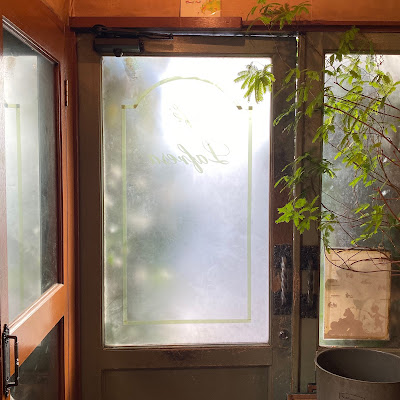













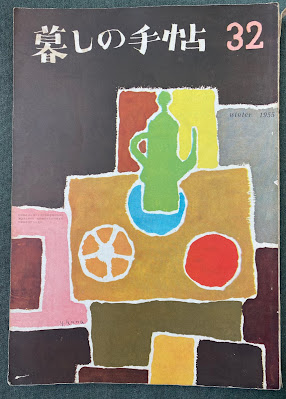

































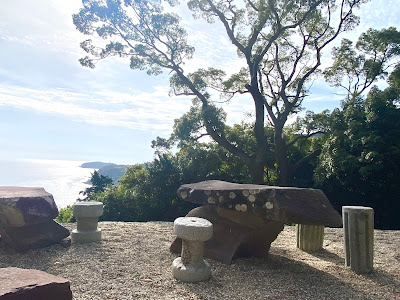






























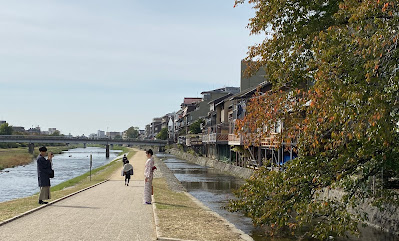
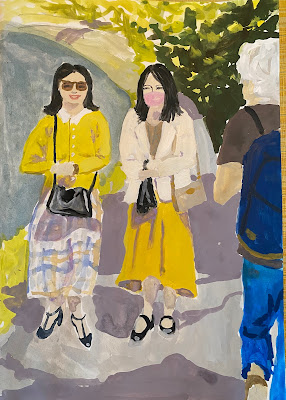





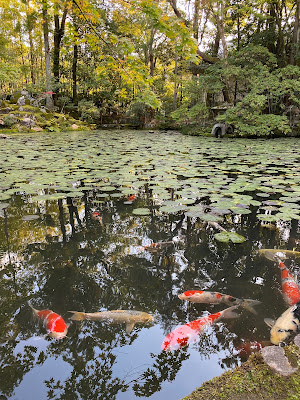














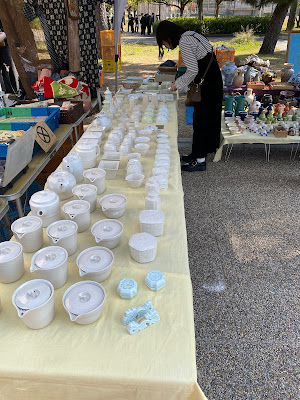

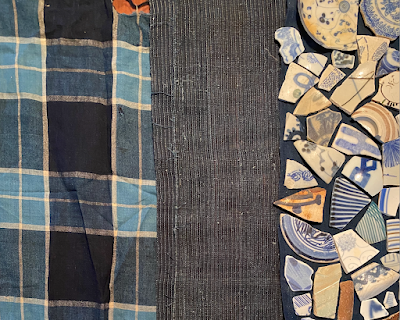

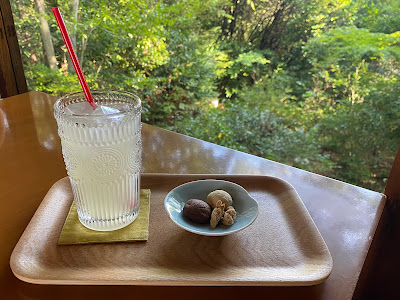











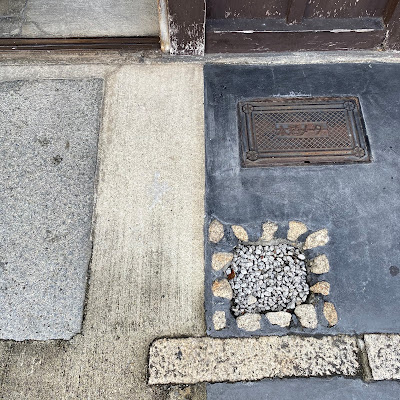



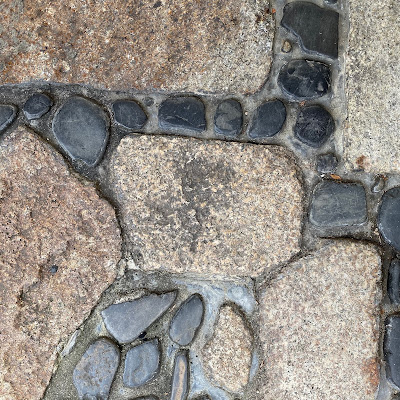














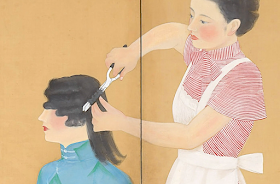








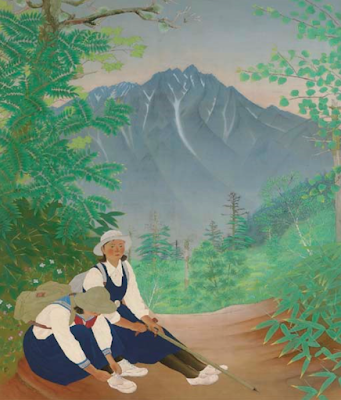
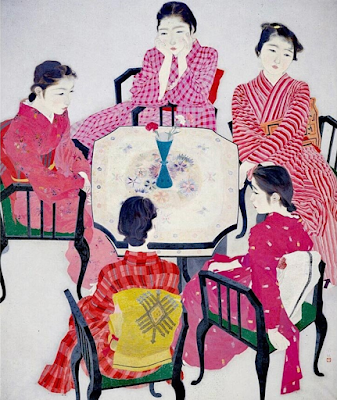
















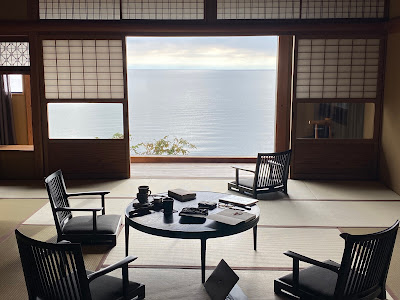












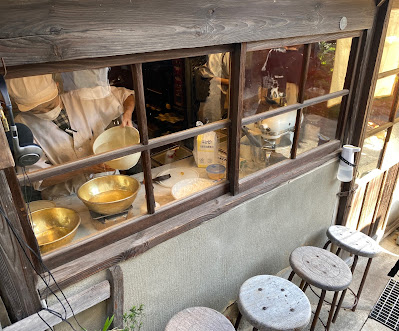




















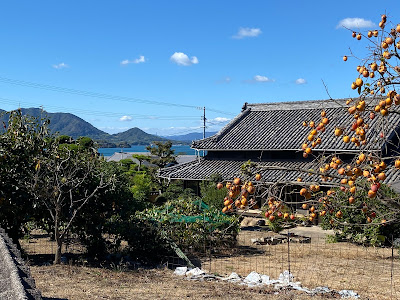






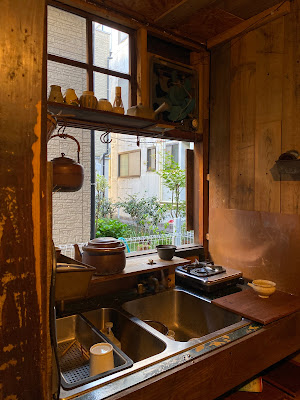














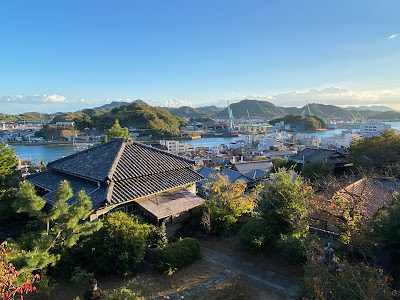
















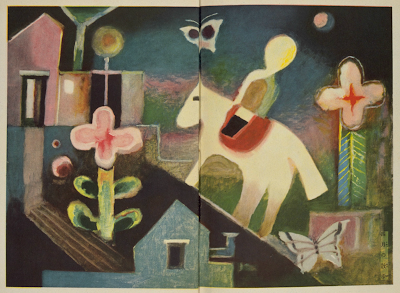


















Oh Laura! Thank you for sharing your thoughts, your photographs, your gouaches, your husbands watercolors and sketches. There’s so much I want to comment on: the Tokyo toilet project (!), Munakata, pretty much every other artist whose work you showed us, the canal, the Kamo, the bridge you can’t cross in a straight line, street textures, the citrus and persimmons… Your photography is exquisite- what an eye you have! I am so grateful to see all you’ve shown- really I feel as if I’ve just returned to America! Now for a cup of tea!
ReplyDeleteThanks Betsy! It's quite rewarding to know that you read it so thoroughly! Glad to be able to share it with you. Hope you go there sometime! xoxo
DeleteI can't wait to study this post! It's beyond EPIC! XX
ReplyDeleteEpic post is right! I can't wait to dig into these evocative images. Just skimming through them now feels like I'm on the trip with you.
ReplyDelete